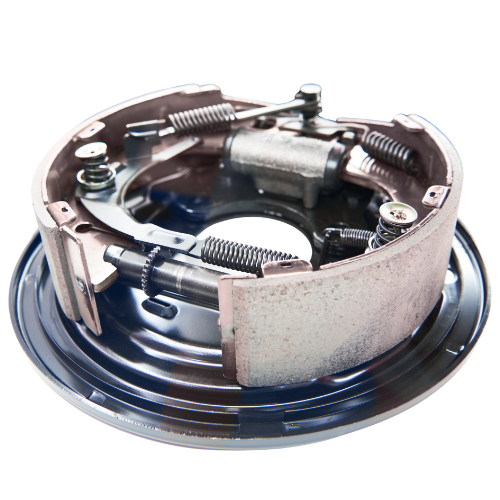Explore the four key components that make up a truck’s brake system—engineered to ensure safe, reliable, and powerful stopping performance on every road.

In this guide, we’ll explore the role of slack adjusters, common issues that shorten their lifespan, and actionable tips for maintaining them effectively.
1. Understanding Slack Adjusters and Their Role in the Air Brake System
Slack adjusters serve as a mechanical link between the brake chamber and the foundation brakes.
Types of Slack Adjusters:
Key Functions of Slack Adjusters:
Pro Tip: Although ASAs reduce the need for frequent adjustments, they still require regular inspections to ensure optimal performance.
2. Common Problems That Shorten Slack Adjuster Lifespan
Several factors can reduce the lifespan of slack adjusters if not addressed promptly:
3. Signs of Slack Adjuster Wear or Failure
Knowing the early warning signs of slack adjuster issues can prevent costly breakdowns:
Pro Tip: Replace slack adjusters showing significant wear or damage immediately to prevent further brake system issues.
4. Best Practices for Maintaining Slack Adjusters
Proper maintenance extends the lifespan of slack adjusters and ensures the entire brake system operates safely.
4.1 Regular Inspections
4.2 Lubrication
4.3 Adjustments
Pro Tip: When adjusting slack adjusters, ensure the pushrod travel is within the recommended range (typically 25–45mm) for optimal braking performance.
4.4 Protect Against Contamination
4.5 Monitor Associated Components
5. Replacement Guidelines for Slack Adjusters
Despite proper maintenance, slack adjusters will eventually wear out and require replacement.
Pro Tip: Replace slack adjusters in pairs to maintain balanced braking performance across the axle.
6. Tips for Choosing High-Quality Slack Adjusters
Investing in premium slack adjusters enhances safety, reliability, and longevity.
Pro Tip: Reputable manufacturers often offer warranties, giving you peace of mind about the product’s durability and performance.
7. FAQs About Slack Adjuster Maintenance
Q: How often should slack adjusters be inspected?
Slack adjusters should be inspected during every routine brake system check, typically every 10,000–20,000 km, or as recommended by the manufacturer.
Q: Can automatic slack adjusters be adjusted manually?
ASAs are designed to self-adjust. Manual adjustments are generally not required unless addressing a specific issue. If frequent adjustments are necessary, the ASA may be faulty and require replacement.
Q: How do I know if my slack adjuster is worn out?
Signs of wear include excessive pushrod travel, uneven braking, delayed response, or visible rust and corrosion.
Q: Can I mix manual and automatic slack adjusters on the same axle?
No. Mixing manual and automatic slack adjusters can cause imbalance and uneven braking, leading to safety risks.
Q: Why is lubrication important for slack adjusters?
Proper lubrication ensures smooth operation, prevents internal components from seizing, and protects against rust and wear.
Conclusion
Slack adjusters are essential for maintaining safe and efficient braking systems in heavy-duty vehicles. By implementing regular inspections, ensuring proper lubrication, and addressing issues promptly, you can significantly extend their lifespan and reduce the risk of brake system failures.
Investing in high-quality slack adjusters and adhering to a proactive maintenance schedule not only enhances safety but also minimises downtime and long-term repair costs.